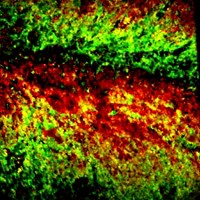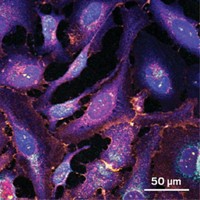Advertisement
Grab your lab coat. Let's get started
Welcome!
Welcome!
Create an account below to get 6 C&EN articles per month, receive newsletters and more - all free.
It seems this is your first time logging in online. Please enter the following information to continue.
As an ACS member you automatically get access to this site. All we need is few more details to create your reading experience.
Not you? Sign in with a different account.
Not you? Sign in with a different account.
ERROR 1
ERROR 1
ERROR 2
ERROR 2
ERROR 2
ERROR 2
ERROR 2
Password and Confirm password must match.
If you have an ACS member number, please enter it here so we can link this account to your membership. (optional)
ERROR 2
ACS values your privacy. By submitting your information, you are gaining access to C&EN and subscribing to our weekly newsletter. We use the information you provide to make your reading experience better, and we will never sell your data to third party members.
Analytical Chemistry
Probe Molecules Detect Formaldehyde In Live Cells
Chemical Biology: Two different probes undergo aza-Cope reactions after binding the metabolite
by Celia Henry Arnaud
September 7, 2015
| A version of this story appeared in
Volume 93, Issue 35
Formaldehyde is a common metabolite that’s been implicated in multiple diseases, including Alzheimer’s, and it’s a frequent environmental contaminant. Unfortunately, its reactivity has made it hard to measure in live cells. Researchers have now harnessed that reactivity to develop two fluorescence probes that turn on after reacting with formaldehyde.
One probe was developed by Christopher J. Chang and Thomas F. Brewer of the University of California, Berkeley (J. Am. Chem. Soc. 2015, DOI: 10.1021/jacs.5b05340). Jefferson Chan and coworkers at the University of Illinois, Urbana-Champaign, developed the other (J. Am. Chem. Soc. 2015, DOI: 10.1021/jacs.5b05339).
Chan was previously a postdoc in Chang’s lab, but work on the probes started after Chan was at Illinois.
Both probes consist of a silicon rhodamine dye scaffold that’s weakly fluorescent. The probes react with formaldehyde to form imines that undergo 2-aza-Cope rearrangement reactions followed by hydrolysis to yield highly fluorescent molecules.
The probes are selective for formaldehyde over other aldehydes, even ones as small as acetaldehyde. The reason, Chang says, is that “formaldehyde is less sterically hindered than any other aldehyde.” Chang plans to use his probe to study formaldehyde’s actions in cells. He and Brewer showed that they can detect formaldehyde concentrations as low as 200 μM and could image the molecule in live cells.
The Illinois group, in contrast, is interested in formaldehyde’s role in diseases. The researchers also used their probe to image formaldehyde in live cells. Chan plans to make versions that work with other types of imaging. “We’re interested in developing two-photon versions of this so we can image deeper into biological specimens,” he says. The team also hopes to make a version suitable for photoacoustic imaging.
The probe molecules “represent advances of extraordinary significance,” says David A. Spiegel, a chemistry professor at Yale University who also develops biological probe molecules. “Live-cell detection and quantification of formaldehyde is certain to enable far-reaching investigations in the biological roles of this important metabolite.”






Join the conversation
Contact the reporter
Submit a Letter to the Editor for publication
Engage with us on Twitter